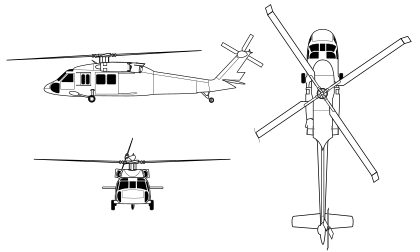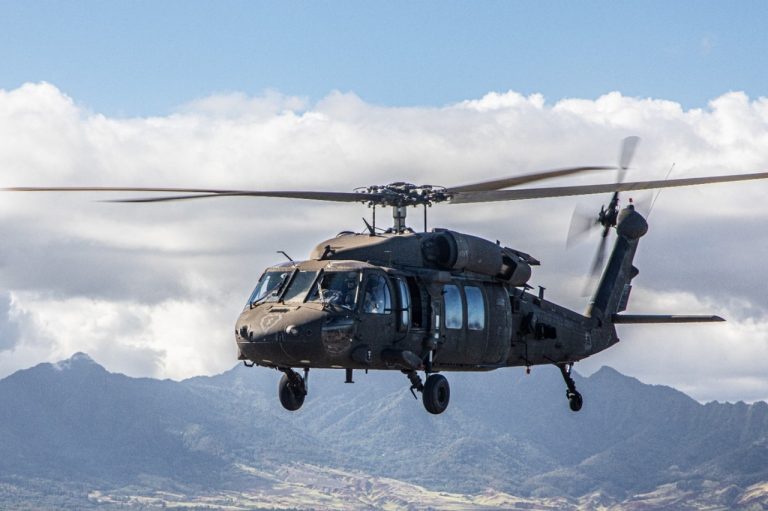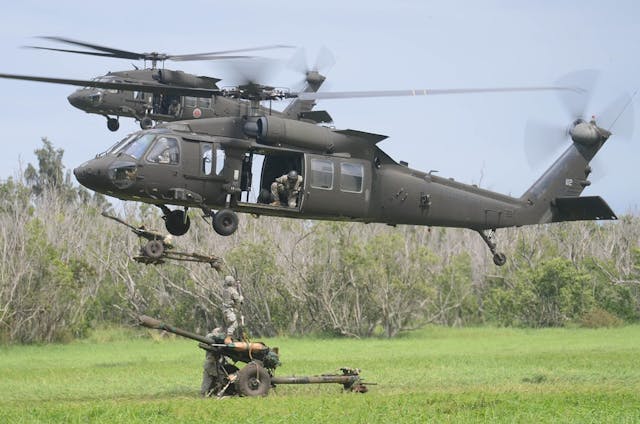UH 60 Helicopter Summary: Everything You Need to Know
UH 60 Helicopter Summary: Everything You Need to Know
Blog Article
Checking Out the Innovative Innovation Behind Airplane Style and Design
The area of aircraft layout and design is observing a transformative change driven by innovative technologies that boost performance, performance, and sustainability. As the industry grapples with the difficulties of environmental duty, advancements in lasting air travel modern technologies promise to improve the future.
Advanced Materials in Airplane Design
Just how can the integration of innovative materials reinvent airplane layout? The incorporation of innovative materials, such as carbon fiber composites, titanium alloys, and progressed ceramics, plays a critical role in boosting airplane performance and performance. These materials use superior strength-to-weight ratios, allowing suppliers to decrease general airplane weight without compromising structural honesty. This reduction in weight directly adds to boosted fuel effectiveness and raised payload capacity.
Furthermore, sophisticated products exhibit improved resistance to rust and fatigue, resulting in reduced maintenance expenses and extensive life span. The use of titanium in critical components helps withstand extreme temperatures and tensions, while carbon fiber composites offer flexibility in design and production procedures. This adaptability permits more aerodynamic shapes, contributing to superior performance characteristics.
Moreover, the assimilation of clever materials, which can change buildings in feedback to external stimulations, opens brand-new methods for flexible systems in aircraft layout. uh 60. These advancements promise not just to improve safety and functional performance however likewise to contribute to sustainability initiatives by reducing ecological effect through lowered discharges. In summary, progressed products are redefining the landscape of airplane style, leading the way for more efficient, durable, and ecologically pleasant aeronautics options
Aerodynamic Technologies for Effectiveness
Aerodynamic advancements play a critical duty in enhancing airplane efficiency, dramatically influencing gas consumption and overall efficiency. Developments in airfoil design, such as the intro of supercritical wings, permit enhanced lift-to-drag proportions, reducing drag at transonic rates. These advancements allow aircraft to keep higher rates with lower fuel expense, directly influencing operational prices and environmental sustainability.
Additionally, the assimilation of winglets has confirmed effective in alleviating vortex-induced drag at the ideas of wings, further improving fuel effectiveness - uh 60. This layout adjustment brings about a decrease in wake disturbance, adding to improved wind resistant efficiency during cruise ship problems

In addition, computational fluid characteristics (CFD) devices have reinvented the testing and refinement of aerodynamic forms, enabling specific simulations of air movement around airplane (uh 60). This enables engineers to innovate continuously, making sure that modern airplane not only satisfy regulatory requirements however also press the boundaries of efficiency in air travel

Function of Computer Simulations
Computer system simulations have ended up being an indispensable tool in the area of airplane layout, enabling engineers to carry out thorough analyses and optimizations of numerous design elements. These simulations allow for the online testing of wind resistant properties, structural integrity, and performance metrics long prior to physical models are built. By using computational liquid characteristics (CFD) and limited aspect evaluation (FEA), engineers can anticipate exactly how air flows around the aircraft and just how various materials will react to anxiety and pressure.
Moreover, computer system simulations assist in the expedition of a large range of variables and circumstances, increasing the design procedure and reducing costs related to physical testing. This capacity not only enhances the precision of forecasts concerning aircraft actions but likewise supplies insights right into possible layout improvements that may not be immediately noticeable through standard approaches.

In addition, simulations aid make certain conformity with rigid security guidelines by enabling designers to recognize and correct prospective concerns early in the layout stage. The assimilation of simulation innovations into the aircraft design process highlights the significant innovations in engineering techniques, eventually adding to the development of more secure, much more reliable, and ecologically pleasant aircraft.
Expert System in Design
Artificial intelligence (AI) is reinventing the design landscape, specifically in airplane style, by enhancing decision-making processes and optimizing design process. Via artificial intelligence formulas, AI can examine large datasets, discovering patterns and insights that notify style options and improve general efficiency.
AI applications in aircraft style include generative style, where more info here algorithms create multiple design alternatives based on defined criteria, enabling designers to review a more comprehensive variety of opportunities. This not only speeds up the style stage however additionally makes certain that the last items meet rigid efficiency and security criteria.
Furthermore, AI-driven predictive analytics facilitate upkeep look what i found organizing by analyzing historical data and predicting prospective failings. This proactive strategy reduces downtime and enhances aircraft dependability.
Additionally, AI help in simulation and modeling, enabling designers to test styles under various conditions without the demand for physical models. This ability shortens development timelines and reduces costs associated with traditional testing methods.
Lasting Aviation Technologies
Just how can the aviation industry efficiently balance development and environmental duty? The solution depends on the adoption of sustainable aviation modern technologies that prioritize efficiency and minimize carbon emissions. Advancements such as lasting aviation fuels (SAFs), which are originated from sustainable sources, have actually become an important component in achieving reduced lifecycle emissions. SAFs can dramatically reduce the carbon footprint of flights, making them a feasible option to typical jet fuels.
Additionally, improvements in aircraft style, such as the advancement of lighter materials and more aerodynamically efficient forms, add to boosted fuel performance. Electric and hybrid propulsion systems are additionally getting traction, offering a path to minimize reliance on fossil fuels and lessen greenhouse gas discharges.
The integration of these technologies is sustained by regulative frameworks and sector partnerships focused on establishing enthusiastic sustainability targets. Moreover, electronic devices like information analytics and man-made intelligence can view it optimize trip operations, further boosting fuel performance. By embracing sustainable practices and innovations, the aviation market can not only satisfy the growing need for flight but likewise play a crucial duty in dealing with environment change, making certain a more lasting future for air transport.
Verdict
The convergence of advanced products, wind resistant advancements, and innovative technologies notes a substantial development in airplane style and engineering. The assimilation of carbon fiber composites, titanium alloys, and AI-driven procedures not only improves efficiency and effectiveness but likewise improves process and anticipating upkeep. The recurring growth of lasting aeronautics modern technologies emphasizes a commitment to ecological obligation, leading the means for a greener future in aeronautics. This constant advancement will certainly form the sector's trajectory for several years to come.

Computer system simulations have become an essential device in the field of aircraft style, enabling designers to carry out thorough analyses and optimizations of different style facets.The merging of innovative products, wind resistant technologies, and innovative modern technologies marks a significant development in airplane style and engineering.
Report this page